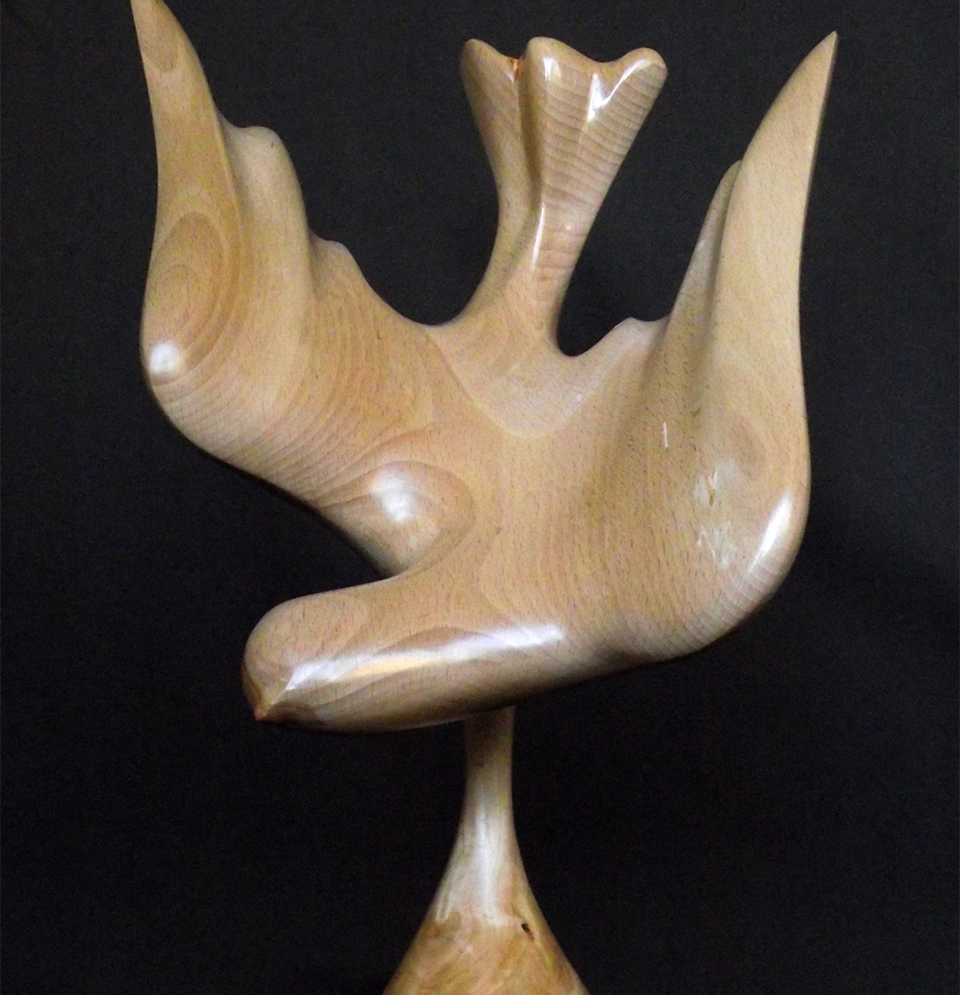- OT
- Life in practice
- Practitioner stories
- “My work is much more recognisable as a style as I have lost my vision”
My vision
“My work is much more recognisable as a style as I have lost my vision”
Sculptor, Victoria Claire (pictured), talks with OT about living with retinitis pigmentosa and her new exhibition in a pitch-black room

03 June 2018
As a 10-year-old, a consultant said he could see what looked like a black spider web at the back of my retina but he couldn’t work out what it was. They kept me on their books for a few years, but they ended up discharging me.
Around the age of 15, I began doing clumsy things and stumbling when I was out with my friends. I couldn’t see the stars. Looking back on it, that’s probably when the night blindness started to kick in.
I was diagnosed with retinitis pigmentosa at the age of 19 while I was studying graphic design. That was quite a challenging time for me and a crossroads in my life. I had just been accepted on a sculpture course, which only offered 28 places across Europe.
I took two years out to try to get my head around what was happening. With the help of Val Jenner from the Kent Association of the Royal Blind I learned about echo location and tricks to keep myself safe. I realised that I hadn’t lost the sculpture skills, they were always with me.
The best way to explain my remaining vision is that the periphery is coming inward and the central vision is coming outward. My contrast is slowly fading away. It is like the world is slowly getting whiter and whiter.
"My contrast is slowly fading away. It is like the world is slowly getting whiter and whiter"
Dark arts
Blind: A Sixth Sense is a debut exhibition. I created six wooden sculptures which represent the five senses and a sixth piece that symbolises what I think of as the sixth sense – trust and freedom.
Often when you go to an art exhibition you can’t touch the work. I always, always encourage people to touch my work, which is very tactile because of the way it is created. The artworks are in a completely pitch-black gallery space with a guide rope and tactile paving. It is very interesting to hear people’s reactions as they come out. Some people find it incredibly disorientating, while others find it claustrophobic. Their representation of the work can be utterly different to what the work actually is. At the exhibition, there were people like myself, with a visual impairment, we all felt like we had one up on everyone else.
My hope for this exhibition is that it gets taken on by other galleries and gets rolled out over the country. I hope it spreads a positive message about not feeling like you have to live a restricted and limited life just because you have a visual impairment. If you can adapt the way you do things there is no reason why you can’t give everything you want to do a go.

On the water
My husband taught me to surf four years ago. We paddle out together, he lets me know when I am far enough out and talks me through the wave. Because I have been doing it for a while now I can feel the wave and know when to go. It is such an amazing freedom. There are no obstacles in the ocean.
The best part about creating artwork is the experience in my studio. I have my music on, my little Westie dog sits in the chair. I have blinds and enjoy turning the lights off so I can create something purely by sense and not by sight. I used to very much create my work by the residual vision that I had. Now it really is feeling what I am doing, feeling those contours and the depths before I create something.
For me, I have found that my disability has enhanced my work. The Royal British Society of Sculptors has commented on that, saying that they feel my work is much more symbolic and recognisable as a style as I have lost my vision. When I first started, the work was much more detailed, but as the vision has decreased it has taken its own form.
Advertisement


Comments (0)
You must be logged in to join the discussion. Log in